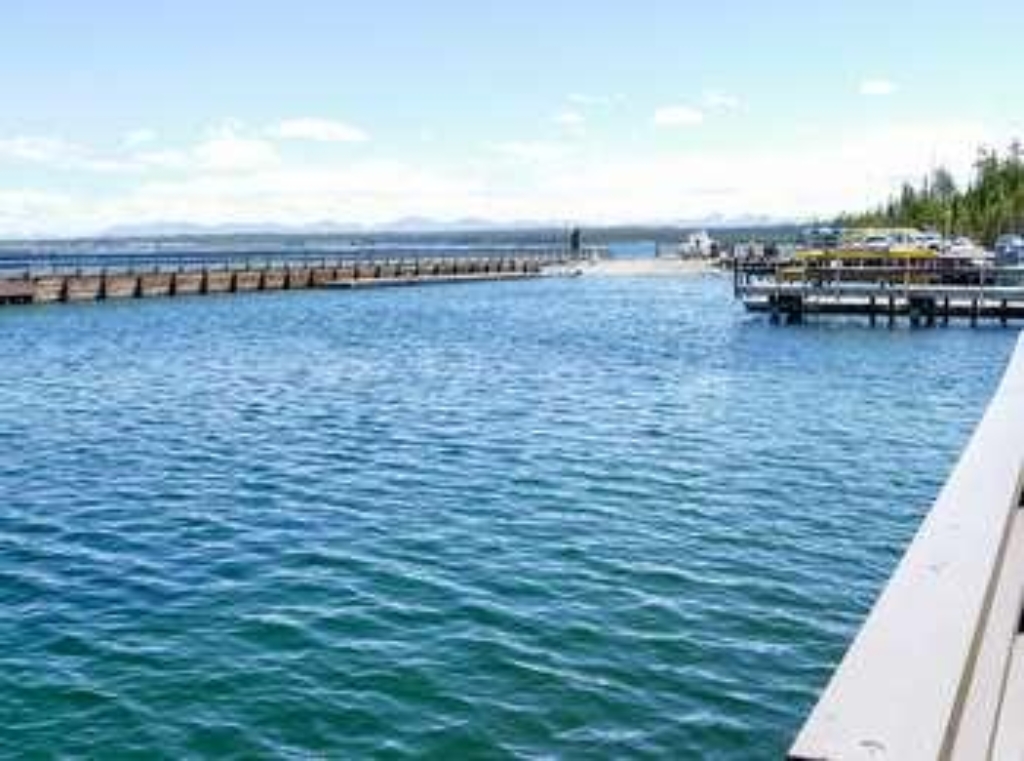
Private and commercial paddling excursions launch from the Grant Marina.
During late summer, Yellowstone Lake becomes thermally stratified with several water layers having different temperatures. The topmost layer rarely exceeds 66 degrees F, and the lower layers are much colder. Because of the extremely cold water, survival time for anyone in the lake is estimated to be only 20 to 30 minutes. In winter, ice thickness on Yellowstone Lake varies from a few inches to more than two feet with many feet of snow on top of the ice.
Yellowstone Lake
Yellowstone Lake is the largest high-elevation lake (above 7,000 ft) in North America, covering 286 square miles, with an average depth of 138 feet, and just over 12,000,000 acre-feet of water. The lake is covered by ice from mid-December to May or June.
Swimming and Soaking
Swimming is not recommended in Yellowstone, and is occasionally prohibited, because most lakes and streams are dangerously cold. Firehole Canyon, near Madison Junction, has a swimming area popular in summer.
Soaking in hot springs and other thermal features is prohibited and features are very fragile. You may soak in bodies of water fed by runoff from hydrothermal features, such as Boiling River.
Anticipate Potential Hazards
From burning hot hydrothermal features, to unpredictable wildlife, to steep terrain, Yellowstone is a dangerous place. You are responsible for your safety. As such, please remember these safety tips:
- Never touch any hydrothermal waters—they can scald you.
- Observe safe distances from all wildlife.
- Stay behind fencing, guard rails, and ledges.
- Use caution when around park waters—they are cold and fast.
- Show patience and courtesy to other people.
Think Safety, Act Safely
Accessibility
Boat launch is wheelchair-accessible.
Is there something we missed for this itinerary?
Itineraries across USA


















































